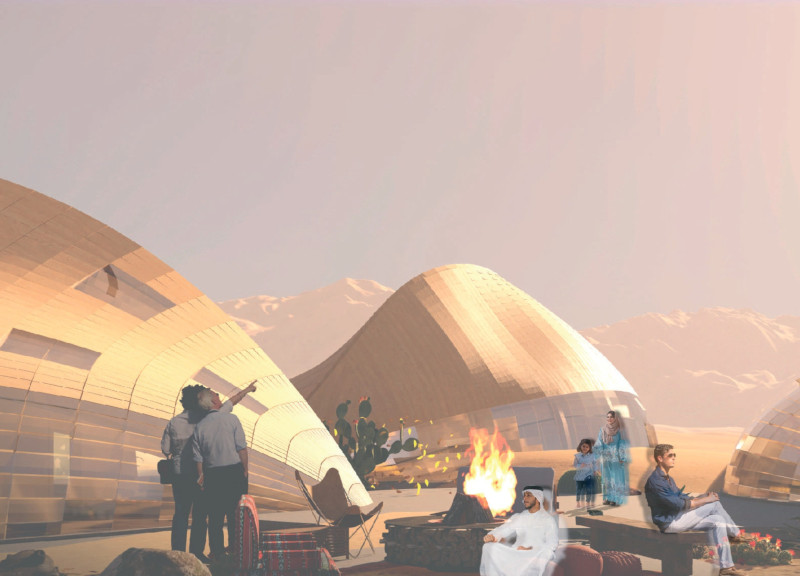5 key facts about this project
At its core, the project serves as a multifaceted hub, fulfilling the needs of its users while encouraging community interaction. The design responds to the requirements for both private and communal experiences, offering spaces for work, relaxation, and social engagement. This duality is evident in the layout, where areas designated for congregating balance with quiet zones conducive to individual activities. The architectural approach emphasizes transparency and flow, skillfully linking interior activities with the exterior environment, thereby enhancing the user experience and fostering a more cohesive relationship with the site.
The architectural language utilized in this project is characterized by clean lines and a modern aesthetic, employing a variety of materials that reflect the surrounding architecture while simultaneously establishing a distinct identity. Concrete, steel, and glass are predominant in the construction, chosen not only for their durability but also for their ability to create dynamic light interactions throughout the day. The use of glass facades allows for natural light to penetrate deep into the interior spaces, reducing the dependence on artificial lighting and promoting a more environmentally conscious design approach.
In considering the unique elements of the project, it is essential to note the integration of green spaces within the design. The incorporation of vertical gardens and green roofs serves multiple purposes: enhancing biodiversity, improving air quality, and providing occupants with a tangible connection to nature. This biophilic design principle resonates throughout the project, leading to an uplifting atmosphere that benefits the mental and physical well-being of its users.
Additionally, the layout includes flexible multifunctional spaces, adaptable to various events or gatherings, which reflect a forward-thinking philosophy and respond to the evolving needs of the community. These areas can easily transition from formal meetings to informal social events, showcasing an understanding of contemporary social dynamics.
Sustainability is a central theme within this architectural design, going beyond mere compliance with regulations to integrate passive design strategies that minimize energy consumption. The project features rainwater harvesting systems and energy-efficient HVAC systems, providing a comprehensive approach to resource management. This commitment to environmental responsibility is a crucial aspect of modern architectural practice, showcasing the potential of design to lead in sustainable development.
In reviewing the architectural plans, sections, and designs, one can appreciate the meticulous attention to detail and the overall coherence of the project. Each element carefully considers the user experience, demonstrating how thoughtful architectural ideas can foster connectivity, sustainability, and community wellbeing.
For readers interested in delving deeper into the intricacies of this architectural project, it is encouraged to explore the architectural plans, sections, and designs provided in the presentation. These resources provide valuable insight into the innovative design approaches and the careful consideration of materials and functionality that define this project. Engaging with these elements can enhance one’s understanding of the contemporary architectural landscape and the vital role such projects play in shaping our built environment.


























